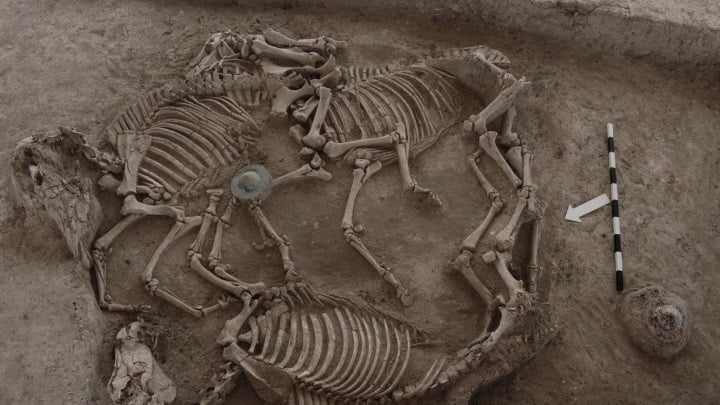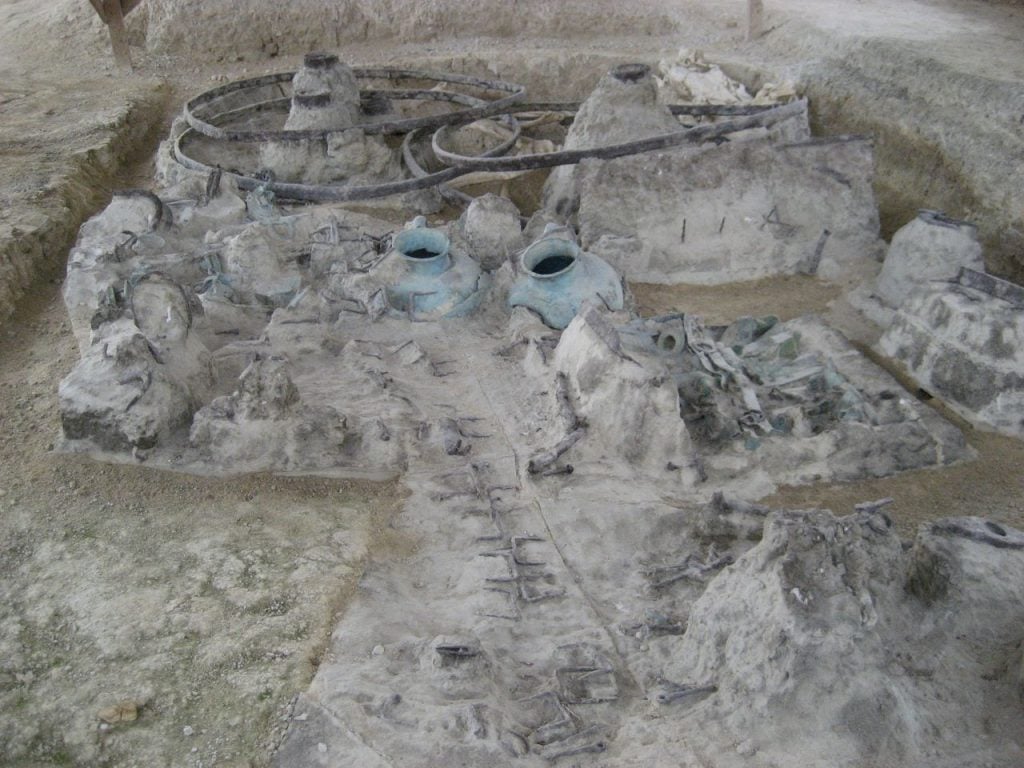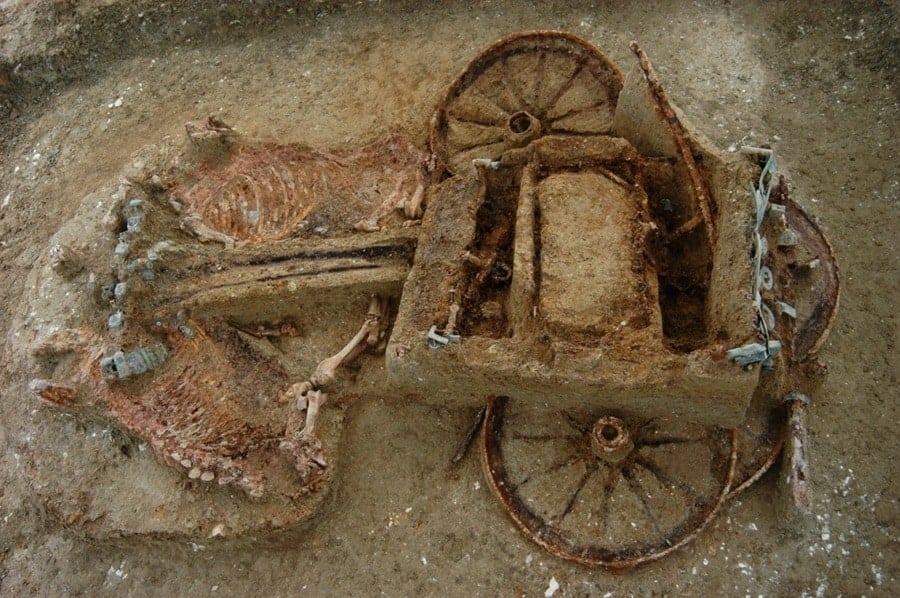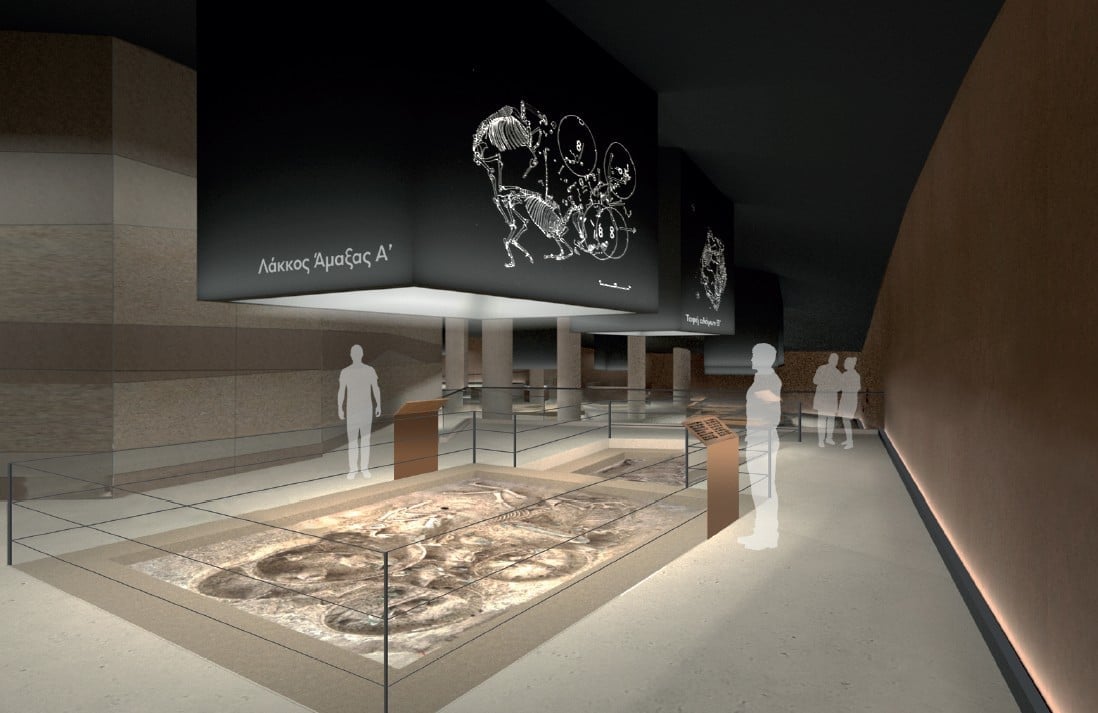
The skeleton remains of the horses discovered in the tumulus in Evros. Credit: Ministry of Culture
Greece is proceeding with the organization of a permanent archaeological exhibition at the ancient tumulus site of Doxipara located in Evros in northeast Greece.
The Minister of Culture Lina Mendoni said on Wednesday that the permanent exhibition will be build to showcase the tumulus which dates back to the 2nd century AD. The tumulus is considered a unique repository of knowledge, as it showcases all the burial practices associated with the upper social class of Roman Thrace.
These include the cremation of the deceased, the sacrifice of horses and dogs alongside their owners, the offering of entire carriages, post-mortem rituals, and the subsequent construction of the tumulus.
The excavations of the burial tumulus of Doxipara began in 2002 and brought to light four cremation pits, which contained residue of incineration from what is believed to be two middle-aged men, a young man, and a young woman.
Carriages and horses found in the tumulus
 Numerous offerings accompanied the dead into the afterlife. Credit: Ministry of Culture
Numerous offerings accompanied the dead into the afterlife. Credit: Ministry of Culture
What makes the burial tumulus of Doxipara important is the discovery of five carriages, buried together with their horses around the tumulus. Such findings have been found in Asia and Europe, but this is the first discovery specifically in Greece. Four-wheel carriages were used for the transport of the dead to incineration and burial.
“The permanent exhibition will be housed in a specially designed protective building with a vaulted roof that reproduces the original boundaries of the tumulus,” Mendoni said.
“The goal of the museological and museographic study is to configure a space that gives the visitor a distinct sense of being inside the burial site, emphasizing silence and respect for the dead. Simultaneously, the visitor will be able to experientially feel and understand significant aspects of the tumulus’s funeral ceremony. The operation of this museum space is expected to critically contribute to highlighting the cultural heritage of Evros and the wider region,” the Greek minister added.

A buried carriage remains in good condition. Credit: Ministry of Culture
The exhibition will feature the skeletal remains of 15 horses and one dog—an indication that the carriage owners were involved in hunting—along with approximately 250 artifacts found within the mound. The reconstruction of the cremations and burials forms the dominant theme of the museum.
Among the mobile archaeological finds are numerous grave goods, metal carriage fittings, decorative elements from the horses’ tack, and highly valuable organic materials. Notably, the Doxipara medical toolkits are considered the best-preserved of their kind internationally from the Imperial period.

An artist’s impression of the permanent archaeological exhibition at Doxipara, Evros. Credit: Ministry of Culture